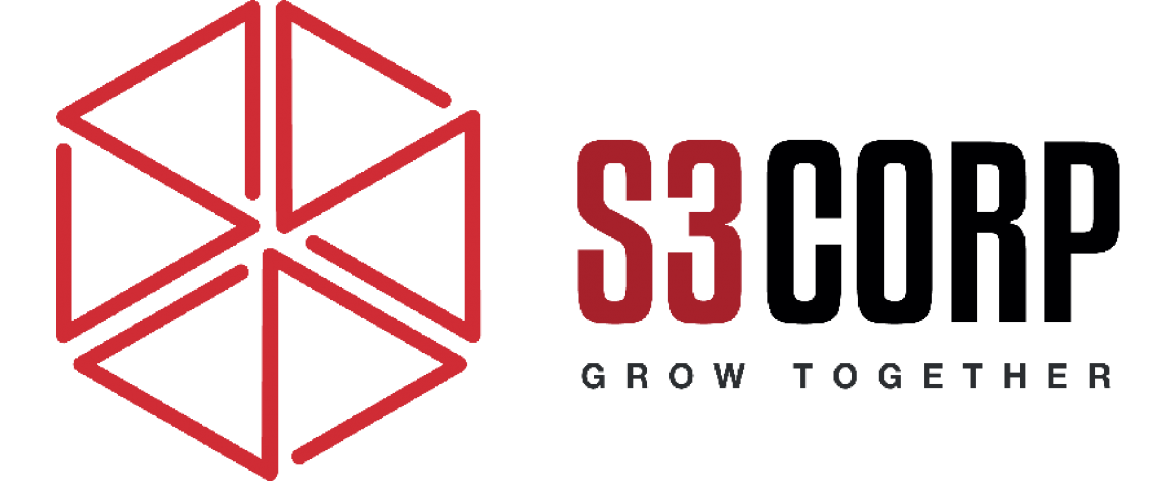Dedicated Software Development Teams: A Comprehensive Guide
— January 6, 2025A dedicated development team is a widely used model in software development, enabling remote collaboration between a client and a team of developers. This approach is suitable for established companies and startups alike, offering flexibility and expertise tailored to specific project needs. In this article, we will explain the dedicated team model, its advantages and disadvantages, and how it compares to other team structures. Additionally, we will provide guidance on when to hire a dedicated team and when alternative options might be more appropriate.
What is the Dedicated Team Model?
The dedicated team model is a collaboration framework where an outsourced team of developers works closely with a client on a long-term basis. It is one of the most common models in software development, alongside fixed-price (FP) and time-and-material (T&M) models. When you hire a dedicated team, the professionals involved are selected based on your business goals and project requirements. This setup mirrors an in-house team, as the developers function as an extension of your organization.
Dedicated teams often include roles such as engineering managers and SCRUM masters, who ensure seamless coordination with your internal team. These teams are ideal for projects like platform launches, product expansions, or ongoing updates. They focus on achieving high performance and delivering agile solutions while taking responsibility for project milestones and outcomes.
Unlike traditional employees, dedicated team members do not require you to handle administrative tasks, HR management, taxes, or social benefits. This allows you to concentrate on strategic business objectives while the development team manages operational details. In essence, the dedicated team model provides a carefully chosen group of professionals focused on a specific project, with all administrative responsibilities handled externally.
Common Services Offered by Dedicated Development Teams
Dedicated development teams are versatile and can be configured to meet various project requirements. Some of the most common services they provide include web development, mobile app development, DevOps, DataOps, cloud services, AI/ML solutions, UI/UX design, product development, cybersecurity, and quality assurance with test automation. These services cater to a wide range of industries and project scopes, ensuring that businesses can access specialized expertise to meet their goals effectively.
Advantages of a Dedicated Development Team
A dedicated development team offers significant cost savings compared to in-house staffing. Accelerance reports that hourly rates for software development roles rose by 23% in 2022. Hiring a full-time software developer in the United States or Western Europe costs between $125,000 and $200,000 annually, excluding recruitment, onboarding, administrative expenses, and employee benefits. With a dedicated development team, these additional costs are handled by the vendor, making this model more affordable. Furthermore, companies can source skilled talent from cost-effective regions like Central and Eastern Europe or Latin America, reducing expenses without compromising quality.
This model also addresses team scaling challenges. A dedicated team allows businesses to quickly expand their workforce to meet project demands, ensuring deadlines are met without compromising quality.
Speed is another key benefit. Building a dedicated development team typically takes 2 to 6 weeks, depending on the number of team members required. This rapid assembly enables businesses to reduce time-to-market, giving them a competitive edge. Additionally, this model provides access to a global talent pool with specialized expertise.
A dedicated development team also extends operational hours. By leveraging remote teams in different time zones, businesses can achieve nearly round-the-clock productivity. Two teams working 8-hour shifts can provide 16 hours of daily project focus, effectively doubling development capacity. This approach enhances efficiency and ensures continuous progress.
Finally, this model allows companies to focus on core business operations. By delegating software development to a dedicated team, organizations can allocate more resources to critical processes. Many businesses have leveraged dedicated teams to develop transformative technology solutions, driving growth and innovation.
Disadvantages of a Dedicated Development Team
Despite its advantages, a dedicated development team comes with challenges. Time zone and communication barriers are among the most significant. Working with remote teams in distant locations can limit overlapping work hours, complicating real-time collaboration. Scheduling meetings during shared time windows can mitigate this issue, but it lacks the immediacy of face-to-face interaction.
Managing a dedicated team is more complex than overseeing an in-house team. Differences in time zones, cultures, and work styles require a tailored management approach. However, dedicated team members remain fully committed to the project, ensuring focus and continuity. Choosing the right vendor, conducting regular meetings, and implementing feedback mechanisms similar to those used with in-house staff can streamline management processes.
Flexibility is another limitation of this model. While more adaptable than traditional in-house staffing, a dedicated development team is less flexible than Staff Augmentation (SA). SA allows businesses to add team members as needed, whereas a dedicated team operates as a fixed unit. Integrating new skills into an established team can be challenging and may disrupt project workflows.
Composition of a Dedicated Team
Front-End Developers
These developers focus on creating user interfaces that are intuitive, visually appealing, and easy to navigate. They ensure that websites and applications deliver a seamless user experience, enhancing customer satisfaction and usability.
Back-End Developers
Back-end developers handle the unseen aspects of software development, including logic, performance, server management, databases, and system design. They ensure your applications are robust, efficient, and scalable.
Project Managers and Product Owners
These professionals lead the development process, ensuring every phase aligns with your goals. They coordinate tasks, manage timelines, and maintain clear communication to guarantee project success.
QA Engineers
Quality assurance engineers ensure that your applications function as intended. They identify and resolve errors, ensuring your software delivers a flawless user experience.
Business Analysts
Business analysts provide valuable insights by analyzing data and identifying opportunities for improvement. Their contributions enhance both business processes and development outcomes, ensuring your project delivers maximum value.
UX/UI Designers
These designers craft engaging digital experiences through wireframes and prototypes. Their focus on user-centric design ensures your applications are both functional and delightful to use.
DevOps Engineers
DevOps engineers focus on the infrastructure that supports your applications. They ensure reliability, scalability, and security, providing a solid foundation for your software to perform optimally.
Comparison: Dedicated Development Team vs. Fixed Price Model
The dedicated development team model and the fixed price model serve different business needs and are suited to distinct project types. The fixed price model operates on a pre-agreed payment structure, where the client pays a set amount regardless of the time spent or the specific work delivered. This model is ideal for short-term projects with clearly defined requirements and a fixed scope of work. However, one of its primary drawbacks is the potential for overpayment. If the project’s time and scope are underestimated, the client still pays the full amount outlined in the contract, even if the deliverables fall short of expectations. This risk can be significant, particularly in scenarios where project requirements are uncertain or subject to change.
The fixed price model is best suited for projects with fixed deadlines, precise specifications, and minimal or no anticipated changes. It is often used for short-term engagements or minimum viable product (MVP) development. However, it lacks the flexibility needed for projects that may evolve over time or require adjustments based on market feedback.
In contrast, the dedicated development team model provides greater flexibility and eliminates the risk of overpayment. This model offers a team that works exclusively on a client’s project, ensuring continuity and focus throughout the development process. Unlike the fixed price model, the dedicated team adapts to changes in requirements or scope, making it ideal for long-term projects or those with evolving needs.
Comparison: Dedicated Development Team vs. Time & Material Model
The Time & Material model is another popular approach, often compared to the dedicated team model. In the Time & Material framework, clients pay for the actual hours worked and the resources used. This model is well-suited for projects with changing requirements, untested markets, or undefined product-market fit. It provides flexibility for in-depth research and iterative development, allowing the project to evolve based on insights and feedback.
While the Time & Material model offers adaptability, it has its limitations. The team working on the project may not remain consistent, as developers or specialists may be reassigned to other projects if they are underutilized. This lack of continuity can affect project momentum and consistency in execution.
The dedicated development team model addresses this issue by offering a stable and exclusive team that remains fully committed to a single project. This ensures consistency in communication, development, and project alignment. The exclusivity of the dedicated team eliminates distractions and ensures that the project receives undivided attention, which is particularly beneficial for long-term or complex projects.
Detailed Comparison Table
Let’s highlight the strengths and limitations of each model which will help businesses choose the most suitable approach based on their project’s needs and goals.
| Aspect | Fixed Price Model | Time & Material Model | Dedicated Development Team |
| Payment Structure | Fixed amount agreed upon in advance | Based on actual time and resources used | Monthly or periodic payment for a dedicated team |
| Flexibility | Limited; changes require renegotiation | High; accommodates evolving requirements | High; adapts to changes while ensuring team continuity |
| Team Continuity | Not applicable; no dedicated team | May vary; team members can be reassigned | Ensured; team works exclusively on the project |
| Best For | Short-term projects with clear requirements | Projects with undefined or changing requirements | Long-term projects requiring consistent focus |
| Risk of Overpayment | High; payment is fixed regardless of actual work delivered | Low; payment aligns with actual work completed | Low; team remains dedicated without hidden costs |
| Suitability | Fixed scope, clear deadlines, MVP development | Exploratory projects, iterative development | Complex, evolving, or long-term projects |
The Key Signs You Should Hire a Dedicated Development Team
A dedicated development team is an effective choice for managing projects with long-term goals, unclear requirements, or rapid growth potential. This model offers flexibility, cost-efficiency, and access to skilled professionals. Below, we explore three key scenarios where hiring a dedicated development team proves to be a strategic decision.
Early-Stage Startups
For startups in their early stages, growth often demands quick action and efficient resource allocation. Hiring a dedicated development team allows you to build a skilled workforce without the delays and expenses of traditional hiring. This approach accelerates product development while your in-house team remains focused on core business activities. By leveraging external expertise, startups can overcome resource constraints, reduce operational costs, and deliver products to market faster.
Projects with Unclear Requirements
When project requirements are not well-defined, the dedicated team model provides the flexibility and resources needed to navigate the discovery phase. This stage often involves extensive testing, research, and iterative development to establish a clear direction. A dedicated team ensures continuous progress without the risk of exceeding budgets. By dedicating time and effort to refining your concept, you create a strong foundation for the project’s success.
Long-Term Projects
For long-term initiatives with the potential for expansion, a dedicated development team is an efficient solution. This model supports scaling by providing access to global talent and reducing hiring and firing costs. Startups moving beyond the pre-seed stage can quickly adapt to market demands and develop scalable products. With a dedicated team, businesses gain the agility to respond to challenges and opportunities without compromising quality.
| Scenario | Benefits of a Dedicated Team |
| Early-Stage Startups | Faster team building, cost savings, and quicker product development. |
| Projects with Unclear Requirements | Flexibility during discovery, focus on testing, and reduced risk of overspending. |
| Long-Term Projects | Access to global talent, cost-efficient scaling, and rapid adaptation to growth opportunities. |
Top Signs That You Should NOT Use the Dedicated Team Model
The dedicated team model offers significant advantages, but it is not suitable for every project. In certain scenarios, this approach may lead to inefficiencies or misaligned resources. Below are three specific situations where choosing a dedicated development team might not be the best decision.
Short and Medium-Term Projects
For small projects with well-defined requirements, hiring a dedicated team is unnecessary. These projects typically involve a clear scope of work that does not demand ongoing adjustments or long-term collaboration. In such cases, other engagement models provide better value. For short-term projects, the fixed-price model is ideal because it aligns with the need for predictable costs and timelines. For medium-term projects, the Time and Material (T&M) approach works better, offering flexibility while maintaining cost control. A dedicated team, designed for dynamic and evolving needs, would be excessive for these straightforward scenarios.
Strict Time and Budget Constraints
Projects with tightly restricted budgets or schedules are not well-suited for the dedicated team model. This approach often includes roles like full-time designers, developers, and project managers, which may not be necessary for projects with limited scope. Instead, a fixed-price model is a more practical choice, as it focuses on delivering the required outcome without incurring additional costs for unused resources. Opting for this alternative ensures that your resources are allocated efficiently and your project remains within its financial and temporal boundaries.
Fully Defined Project Scope
When every aspect of a project is planned in detail, with no room for adjustments or compromises, a dedicated team is unnecessary. This model thrives in situations where flexibility and iterative development are essential. However, a strictly defined project with predetermined features and execution plans benefits more from fixed-price or T&M models. These alternatives allow for a focused approach to delivering the project without the added complexity or cost of a dedicated team.
| Scenario | Best Model | Reason |
| Short-Term Projects | Fixed Price | Predictable scope and cost. |
| Medium-Term Projects | Time & Material | Flexibility within defined limits. |
| Strict Budget and Time Constraints | Fixed Price | Efficient resource allocation without unnecessary roles. |
| Fully Defined Scope | Fixed Price or T&M | Clear plan execution without added complexity or cost. |
How to Hire a Dedicated Software Development Team
If you’ve determined that a dedicated development team is the right model for scaling your operations, the next step is hiring the right team. Below is a detailed guide to ensure success.
Define Your Needs
Start by clearly outlining your requirements. This step prevents deviation from your objectives and ensures you make informed decisions. Document your reasons for building the team, their expected responsibilities, and how they will integrate with your existing operations. Specify the technologies and skills needed, reporting structures, and whether managerial roles are necessary. Additionally, consider potential future expansion and establish metrics to evaluate the team’s performance. While your needs may evolve, having a documented plan ensures you remain focused on your core goals.
Source Potential Partners
Once your requirements are clear, identify potential partners capable of meeting them. Begin with a broad search to maximize your options. Use online resources, ask for recommendations from your professional network, and attend industry events to identify reputable providers. After compiling a list of candidates, evaluate each one based on their ability to fulfill your specific needs.
Establish How Each Partner is Different
Not all outsourcing partners operate in the same way. Differences in location, team management, and operational models can significantly impact your project’s success. Investigate how each partner distinguishes themselves and assess the validity of their claims. Understanding these differences will help you identify the best fit for your requirements.
Verify Expertise and Credentials
Conduct thorough research to verify the expertise and credentials of your shortlisted partners. Look for case studies, testimonials, and past collaborations to assess their track record. Connect with previous clients or executives who have worked with the provider to gain honest insights. Be cautious of providers that make unrealistic claims, as these often indicate unreliable service. Eliminate any candidates with red flags during this stage.
Evaluate Communication
Effective communication is essential for a successful partnership. Test this by initiating contact with potential partners. Evaluate their responsiveness, clarity, and willingness to address questions or concerns. Note whether they provide detailed answers, avoid difficult topics, or act as mere “yes people.” Strong communication ensures seamless collaboration between your in-house and offshore teams, allowing you to maintain control over the development process.
Receive and Assess Proposals
By now, you should have shared your requirements with several potential partners. A reliable partner will deliver a proposal tailored to your needs, while an exceptional one will offer additional insights into the local talent pool. Review each proposal carefully, ensuring it aligns with your expectations and requirements.
Make Your Decision
With multiple offers in hand, it’s time to select the best partner. Consider the trade-offs between speed, cost, and quality, as these factors often influence the final decision. While there are no guarantees, choosing a partner based on a balanced evaluation of these factors increases your chances of success. Remember, accepting an offer is just the beginning of the partnership.
| Step | Key Actions | Outcome |
| Define Your Needs | Document requirements, responsibilities, technologies, and evaluation metrics. | Clear understanding of goals and priorities. |
| Source Potential Partners | Conduct broad research using online tools, networks, and events. | Comprehensive list of potential partners. |
| Establish Differences | Investigate operational models and unique attributes of each partner. | Identification of key differentiators. |
| Verify Expertise | Review case studies, testimonials, and connect with past clients. | Reliable insights into provider credibility. |
| Evaluate Communication | Test responsiveness, clarity, and willingness to address concerns. | Assessment of collaboration potential. |
| Receive and Assess Proposals | Review tailored proposals and additional insights. | Clear understanding of each partner’s offering. |
| Make Your Decision | Compare speed, cost, and quality to select the best partner. | Informed choice to proceed with the right partner. |
By following these steps, you can confidently hire a dedicated development team that meets your needs and supports your business objectives.
Conclusion
A dedicated team is the most suitable choice for projects with unclear or evolving requirements, especially for startups and growing tech businesses. This model is ideal for companies seeking long-term collaboration, as it offers a cost-effective solution and access to skilled professionals tailored to specific project needs. Considering these benefits, you can decide whether hiring a dedicated development team aligns with your project goals.
FAQs
What is a dedicated software development team?
A dedicated development team is an outsourcing model where a partner company assembles a complete team that works exclusively for your organization. These teams handle a wide range of software development services, provided they include the required specialists.
What is the structure of a dedicated development team?
The structure of a dedicated development team typically includes:
- Developers: These can be front-end, back-end, full-stack, or mobile developers, responsible for writing and maintaining the software code.
- UX/UI Designers: They create the visual and functional design of the software, ensuring a seamless user experience.
- QA Engineers: These professionals test the software to ensure it meets project requirements and functions as intended.
How to hire a dedicated development team?
To hire a dedicated development team, start by clearly defining your project requirements. Research the market to identify potential providers and verify their credentials. Assess their communication practices and ability to collaborate effectively, as these factors are crucial for the success of your project.
What is a dedicated team model?
A dedicated team model is a form of outsourcing where a remote team, including a project manager, is hired to work exclusively on your project. This setup ensures close collaboration between the client and the development team, fostering transparency and alignment with project goals.
What is the difference between the fixed-price model and a dedicated development team?
In a dedicated development team model, the client is actively involved throughout the project, participating in management and decision-making processes. In contrast, the fixed-price model limits client involvement to the initial requirement-setting phase, with periodic updates provided during development.
What are the pros and cons of a dedicated project team structure?
The dedicated team model offers several advantages:
- Cost Efficiency: This model can reduce costs by optimizing resource allocation.
- Focused Approach: The team works exclusively on your project, ensuring dedication and consistency.
- Transparent Management: Clients have full visibility into the development process.
- Relevant Expertise: Teams are assembled based on the specific skills needed for the project.
- Tight Collaboration: Regular communication fosters a strong working relationship.
- Faster Development: Dedicated focus can accelerate project timelines.
- Flexibility: Teams can adapt to changing project requirements.
However, this model may not be efficient for short-term projects, where the setup and management effort may outweigh the benefits.





